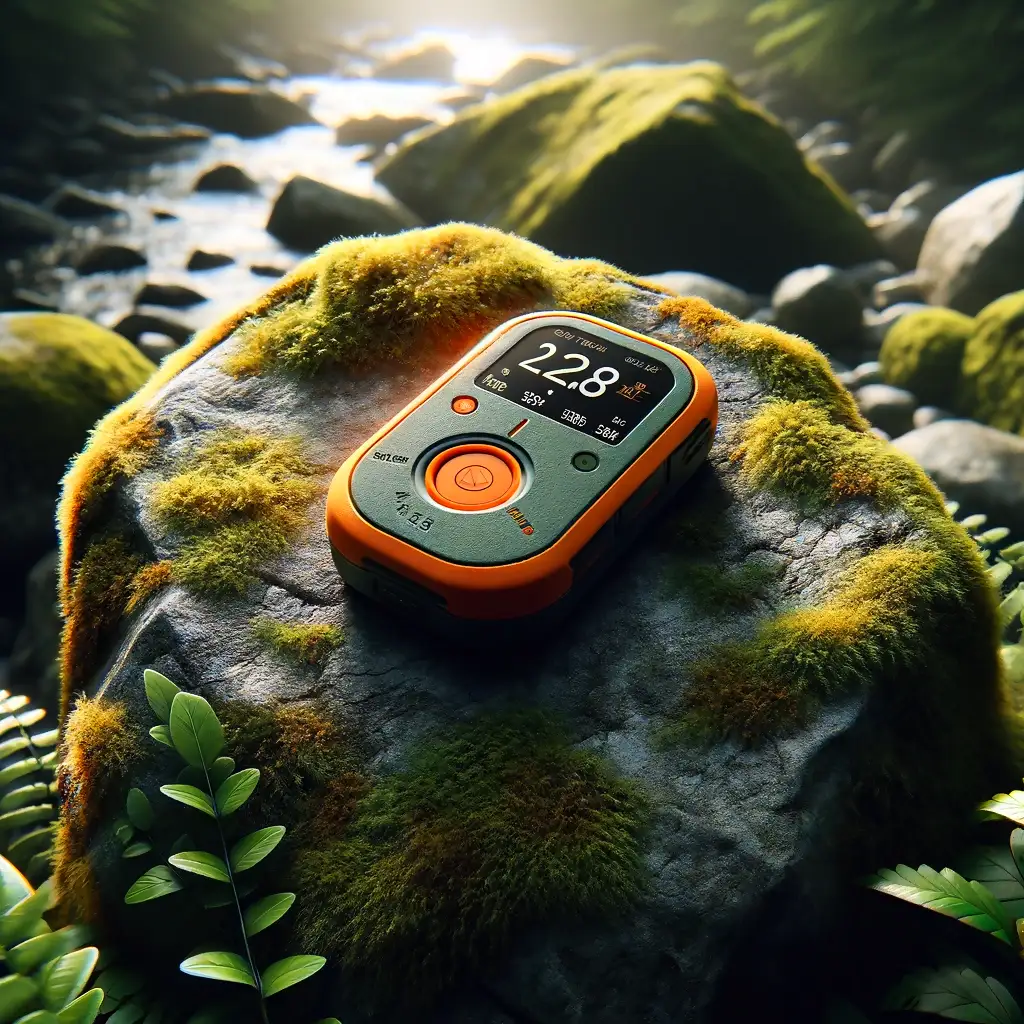Personal Locator Beacons – and how one could save your life
This post may contain affiliate links. This means that we may receive a small commission from purchases through those links. Read more in our affiliate disclosure.
- Introduction
- What is a Personal Locator Beacon?
- How Do PLBs Work?
- PLB Technologies
- 406 MHz Distress Frequency
- 121.5 MHz Homing Signal
- Automatic Identification System (AIS)
- GPS
- Strobe Lights and Whistles
- PLBs vs. Satellite Messengers
- How to Register a Personal Locator Beacon
- Registration Process
- Importance of Accurate Information
- International Registration
- Legal Considerations
- How to Use a Personal Locator Beacon
- When to Activate a PLB to Send an SOS Distress Call
- Defining an Emergency
- Situations Warranting Activation
- When Not to Use a PLB
- The Consequences of Misuse
- How Much Does a Personal Locator Beacon Cost?
- Factors Influencing PLB Cost
- Price Ranges
- Additional Costs
- Regional Price Variations
- Long-Term Investment
- Do I Need a Personal Locator Beacon for Hiking?
- Assessing the Need for a PLB
- Weighing the Benefits
- Should I Upgrade to a GPS PLB?
- Situations Where a PLB May Not Be Necessary
- Final Considerations
- PLB FAQs
- What Happens When You Activate a Personal Locator Beacon?
- Does a PLB Work Overseas?
- How Long Do Personal Locator Beacons Last?
- How Often Do You Replace a PLB Battery?
- How Do I Know My PLB Is Working?
- Is a PLB Reusable?
- How Much Does It Cost to Activate a PLB?
- Do PLBs Have Subscription Fees?
- What are the Disadvantages of a Personal Locator Beacon?
- What is the Difference Between GPS and PLB?
- What is the Difference Between PLB and SAT Phone?
- What are the Two Types of Personal Locator Beacons?
- Are All Locator Beacons Considered PLB?
- How Accurate is the GPS on a PLB?
What is a Personal Locator Beacon?
A Personal Locator Beacon, or PLB, is a compact, portable device designed to send out an emergency distress signal in life-threatening situations. It’s a lifeline, primarily used in remote areas where traditional communication methods, like cell phones, are unreliable. PLBs are often carried by hikers, boaters, and adventurers venturing into remote locations.

How Do PLBs Work?
PLBs operate by transmitting a distress signal to a network of satellites, part of the international Cospas-Sarsat rescue system. When activated, the PLB sends a signal containing the device’s unique identification and, in some cases, GPS coordinates. This signal is detected by satellites and relayed to a local rescue coordination center. From there, a search and rescue operation is initiated, using the signal to pinpoint the location of the person in distress.
PLB Technologies
PLBs use various technologies to ensure effective operation in different conditions.
406 MHz Distress Frequency
- How it Works: The 406 MHz frequency is the heart of a PLB’s distress signaling capability. This frequency is monitored globally by the Cospas-Sarsat satellite system, a network specifically designed for search and rescue (SAR) operations.
The use of this frequency allows for worldwide coverage, ensuring that no matter where a person is, their distress signal can be detected by SAR authorities. This system also enables the transmission of encoded information, including the beacon’s registration data and, potentially, GPS coordinates.
121.5 MHz Homing Signal
- How it Works: In addition to the 406 MHz signal, PLBs also transmit a 121.5 MHz homing signal. This is a lower frequency signal used by SAR teams once they are in the general vicinity of the distress signal.
The 121.5 MHz signal aids rescuers in pinpointing the exact location of the person in distress, especially useful in the final stages of a rescue operation. It effectively works as a “homing” beacon, guiding rescuers to the precise spot.
Automatic Identification System (AIS)
- How it Works: Some PLBs are equipped with the Automatic Identification System (AIS), primarily used in maritime environments. AIS transmits a distress signal to nearby ships and AIS-equipped stations.
The major advantage here is the speed of response. In situations where the distressed individual is near other AIS-equipped vessels, help can arrive much faster compared to waiting for a distant SAR team.
GPS
- How it Works: GPS technology in PLBs allows the device to send accurate geographical location data along with the distress signal. When activated, the PLB calculates its position using satellites and includes these coordinates in the distress message.
This integration drastically improves the speed and accuracy of the SAR response. Knowing the exact location of the individual in distress eliminates the search phase of a rescue operation, directly transitioning to the rescue phase.
Strobe Lights and Whistles
- How it Works: As an additional feature, some PLBs include strobe lights and whistles. The strobe light is a high-intensity flashing light, and the whistle is a loud, audible signal device.
These features are invaluable in situations where visibility is poor or in environments where rescuers are conducting a close-range search. They provide a visual and audible cue that can lead rescuers to the individual’s location, especially effective during night-time or in overcast conditions.
PLBs vs. Satellite Messengers
PLBs and satellite messengers serve similar, yet distinct roles. Satellite messengers offer two-way communication, allowing for text messaging and sometimes even voice calls via satellite networks. They often require a subscription service. PLBs, on the other hand, are strictly for emergencies, sending a one-way distress signal to rescue authorities without the need for a subscription. This makes PLBs a more dedicated emergency device, while satellite messengers provide broader communication capabilities for regular check-ins and non-emergency contact.
How to Register a Personal Locator Beacon
Registering a Personal Locator Beacon (PLB) is a critical step in ensuring its effectiveness in an emergency. Registration is not just a legal requirement in many places, but it also significantly aids in the search and rescue process. Here’s what you need to know about registering your PLB.
Registration Process
- Where to Register: In the United States, for instance, you can register your PLB with the National Oceanic and Atmospheric Administration (NOAA). Many other countries have similar governmental bodies for beacon registration.
- Online Registration: The most common way to register a PLB is through an online portal. This process is typically straightforward, involving filling out a form with personal and beacon details.
- Information Required: You’ll need to provide personal information such as your name, address, and contact details. Additionally, the unique identifier of your PLB, often called a HEX ID or UIN, is required. Some forms also ask for emergency contact information and details about your typical use of the PLB (like hiking, boating, etc.).
- Proof of Purchase: While not always required, it’s a good idea to have your proof of purchase handy in case it’s needed for the registration process.
Importance of Accurate Information
- Facilitates Faster Rescue: Accurate registration information helps rescue teams understand who they are looking for and potentially what kind of situation they might be facing.
- Updates: It’s vital to keep your registration information up to date. If you move, change phone numbers, or there are changes in your emergency contacts, update this information promptly.
International Registration
- Global System: The Cospas-Sarsat system is international, but you should register your beacon in your home country. If you’re traveling abroad, your beacon will still work, but it’s linked to the information provided in your home country’s database.
- Visiting Other Countries: If you’re planning to use your PLB in a country other than where it’s registered, it’s wise to inform the local search and rescue authorities of your presence and PLB details if possible.
Legal Considerations
- Mandatory in Some Jurisdictions: In some places, registering your PLB is required by law. Failing to register, or using an unregistered beacon, can sometimes lead to legal consequences.
- False Alarms: Ensure you understand the legal implications of false alarms in your jurisdiction. While accidental activations happen, there may be fines or penalties for misuse or negligent handling leading to false alerts.
How to Use a Personal Locator Beacon
Using a Personal Locator Beacon (PLB) correctly is indispensable for ensuring it functions as intended in an emergency. Misuse can lead to false alarms or, worse, failure in a real crisis. Here’s a comprehensive guide on how to use a PLB effectively.
Before Use
- Read the Manual: Familiarize yourself with your specific PLB model. Understand its features, battery life, and maintenance requirements.
- Regular Checks: Perform routine checks to ensure the PLB is functioning correctly. Look for indicators like battery status and test the beacon according to the manufacturer’s instructions.
- Battery Life and Replacement: Be aware of the battery life of your PLB and the procedure for replacing it. Never embark on a trip with a low battery.
Activation Methods
- Manual Activation: Most PLBs require manual activation. This typically involves lifting or breaking a seal and pressing a button. Some models might have additional steps, so read up on your device’s specific activation process.
- Automatic Activation: Certain PLBs, especially those designed for maritime use, can activate automatically when immersed in water. If your PLB has this feature, understand the conditions that trigger it.
During an Emergency
- When to Activate: Activate your PLB only in dire situations where there is a grave, imminent threat to life or property, and you have no other means of communication.
- Clear Line of Sight: Ensure the PLB has a clear view of the sky. Obstructions can hinder the signal from reaching satellites.
- Remain Visible and Stationary: Once activated, stay in an open area if possible. Movement can make it harder for rescuers to locate you. You can use reflective items such as the shiny (or golden) side of your emergency blanket, or the strobe light feature of your PLB, to make yourself more visible.
- Keep the PLB turned on and transmitting until rescuers reach you. Turning it off prematurely can lead to losing your signal.
After Activation
- Handling After Rescue: Once you’re safe, turn off the PLB to stop the distress signal. Inform the appropriate authorities that you are no longer in distress.
- Debrief and Report: You may need to report the incident and the use of the PLB to the appropriate authorities, particularly if the rescue involved government resources.
Maintenance and Care
- Storage: Store your PLB in a readily accessible place, safe from extreme temperatures and conditions that could damage it.
- Regular Testing: Follow the manufacturer’s guidelines for testing the PLB. Most have a test mode that checks its functionality without sending an actual distress signal.
- Professional Servicing: Have your PLB professionally serviced as recommended by the manufacturer, especially after it has been used in an emergency.
When to Activate a PLB to Send an SOS Distress Call
Activating a Personal Locator Beacon (PLB) is a critical decision. It’s a call for help that mobilizes search and rescue resources, and should only be used in genuine emergencies. Understanding when to activate your PLB can make the difference between life and death.
Defining an Emergency
- Life-Threatening Situations: Activate your PLB if you or someone in your group faces a life-threatening situation, such as severe injury, illness, or imminent danger.
- No Other Means of Communication: PLBs should be your last resort. If you’re unable to call for help using a phone, radio, or other methods, then it’s time to use your PLB.
Situations Warranting Activation
- Serious Injuries: If someone has sustained serious injuries like broken bones, significant bleeding, or head trauma where immediate medical attention is required.
- Lost or Stranded: In situations where you are hopelessly lost or stranded without any means of self-rescue or communication.
- Natural Disasters: If caught in a natural disaster like a hurricane, avalanche, or flood, where your safety is compromised, and escape routes are blocked.
- Boating and Maritime Incidents: Capsizing, sinking, or other serious boat malfunctions in remote waters.
When Not to Use a PLB
- Minor Inconveniences: Avoid using a PLB for situations that are inconvenient but not life-threatening, such as running out of water or minor equipment failure.
- Non-Emergency Communication: Do not use a PLB as a way to communicate non-urgent messages to friends or family.
- Test Signals: Never activate a PLB just to test it. Testing should be done according to the manufacturer’s instructions without triggering a full distress signal.
The Consequences of Misuse
- False Alarms: Activating a PLB without a genuine need can lead to unnecessary search and rescue operations, diverting resources from real emergencies.
- Legal and Financial Repercussions: In many jurisdictions, misuse of a PLB can result in legal penalties, including fines. The cost of an unwarranted rescue operation might also be charged to the user.
How Much Does a Personal Locator Beacon Cost?
The cost of a Personal Locator Beacon (PLB) can vary widely based on features, brand, and region. Here’s a detailed breakdown of what you can expect in terms of pricing.
Factors Influencing PLB Cost
- Brand and Quality: Established brands known for reliability and durability typically charge more. However, investing in a well-known brand can mean better build quality and reliability.
- Features: Basic models are less expensive. Added features like GPS integration, strobe lights, and advanced battery life increase the price.
- Region: Prices can vary by region due to import taxes, shipping costs, and the presence of local distributors or retailers.
Price Ranges
- Entry-Level PLB Models typically range from $200 to $300. They include basic features necessary for effective emergency signaling.
- Mid-Range PLB Models priced between $300 and $500 usually come with additional features like GPS functionality, enhancing location accuracy.
- High-End PLB Models can cost $500 or more and often include features like a more rugged build, longer battery life, and enhanced GPS capabilities.
Additional Costs
- Accessories: Consider the cost of accessories like mounting brackets, waterproof cases, or external antennas.
- Battery Replacement: While not a frequent expense, PLB batteries do need replacement, especially after use in an emergency. This cost can range from $50 to $150.
- Servicing and Maintenance: Regular professional servicing, though not always mandatory, can extend the life of your PLB. This cost varies depending on the service provider.
Regional Price Variations
- United States: Prices in the U.S. generally start at the lower end of the global spectrum, thanks to a wide availability of brands and models.
- Europe: Costs in Europe might be slightly higher due to VAT and import taxes.
- Australia and New Zealand: These regions have a good range of options, but prices can be higher due to import costs and fewer local distributors.
Long-Term Investment
- Cost vs. Value: While the initial outlay for a PLB can seem significant, it’s important to weigh this against the value of safety and peace of mind in remote or risky environments.
- No Subscription Fees: Unlike some satellite messengers and emergency communication devices, PLBs typically do not require a subscription fee, making them a one-time investment.
Do I Need a Personal Locator Beacon for Hiking?
Deciding whether to carry a Personal Locator Beacon for hiking is a significant consideration. For many, a PLB is an essential piece of safety equipment. Here’s a deep dive into why a PLB might be necessary for your hiking adventures.
Assessing the Need for a PLB
- Remote Areas: If you’re hiking in remote, unpopulated areas where cell service is non-existent, a PLB can be your only lifeline in an emergency.
- Solo Hiking: When hiking alone, a PLB becomes even more crucial. It can call for help when you’re unable to do so yourself due to injury or other emergencies.
- Challenging Trails: In rugged, challenging terrains, or in areas known for sudden weather changes, having a PLB can be a game-changer in critical situations.
- Peace of Mind: For both you and your loved ones, knowing that you have a reliable way to call for help can provide significant peace of mind.
Weighing the Benefits
- Reliability: PLBs are designed to work in extreme conditions where other communication devices fail.
- No Subscription Fees: Unlike some other emergency communication devices, PLBs generally don’t have ongoing costs.
- Ease of Use: In a high-stress situation, the simplicity of activating a PLB can be invaluable.
Should I Upgrade to a GPS PLB?
- Non-GPS PLBs: These devices still send a distress signal that can be picked up worldwide, but without precise location data – the location accuracy falls within a 2 to 5-kilometer radius of the actual position. Depending on the terrain, this can make it very challenging to find you, especially in dense forest and steep mountains.
- GPS PLBs: These offer the added advantage of sending your exact coordinates with an accuracy of about 100m, which can significantly speed up the rescue process.
- Recommendation: For serious hikers, especially those venturing into less-traveled paths, a GPS-enabled PLB is a wise investment. The faster a rescue team can locate you, the better your chances in an emergency.
Situations Where a PLB May Not Be Necessary
- Well-Traveled Trails: In popular hiking areas with good cell coverage and frequent foot traffic, you might decide a PLB isn’t necessary.
- Group Hiking: While still beneficial, the urgency for a PLB might be less if you’re hiking in a group, especially if others carry one, or if cell phone service is good in the area.
Final Considerations
- Training and Preparation: Owning a PLB is not a substitute for proper hiking preparation. Always plan your route, check the weather, and carry essential supplies.
- Legal Requirements: In some areas, carrying a PLB might be legally required, especially in national parks or protected wilderness areas.
PLB FAQs
What Happens When You Activate a Personal Locator Beacon?
Upon activation, the PLB transmits a distress signal on the 406 MHz frequency to the Cospas-Sarsat satellite system. The satellite system relays the signal to the nearest ground station, which then forwards it to a local rescue coordination center. The rescue center coordinates with local search and rescue teams to initiate a rescue operation based on the PLB’s transmitted location.
Does a PLB Work Overseas?
Yes, PLBs work globally. The Cospas-Sarsat system, which PLBs use for signaling, is an international network providing worldwide coverage. However, while the PLB will work overseas, it’s essential to register it in your home country, as the distress signal will be relayed to the rescue authorities there.
How Long Do Personal Locator Beacons Last?
Most PLBs have a battery life of 5 to 7 years when stored properly and unused. The battery life when actively transmitting a distress signal is typically 24 to 48 hours, depending on the model and conditions. The overall shelf life of a PLB can be around 10 years, but this can vary depending on the manufacturer and model.
How Often Do You Replace a PLB Battery?
Batteries should be replaced every 5 to 7 years, or as recommended by the manufacturer. It’s also necessary to replace the battery after the PLB has been used in an emergency. Battery replacement should be done by a professional service center authorized by the PLB manufacturer.
How Do I Know My PLB Is Working?
PLBs have a test mode that allows you to check their functionality. This test does not activate a distress signal. Look for visual or auditory indicators that confirm the test has been successful, such as LED flashes or beeps.
Is a PLB Reusable?
Yes, PLBs are reusable after activation. However, the battery must be replaced by a professional service before the PLB can be used again.
How Much Does It Cost to Activate a PLB?
There is no cost to activate a PLB in an emergency. The service is free as it’s intended for life-threatening situations.
Do PLBs Have Subscription Fees?
Unlike some satellite messengers, PLBs do not require a subscription fee. The cost is a one-time purchase of the device.
What are the Disadvantages of a Personal Locator Beacon?
PLBs only send a one-way distress signal. There’s no way to receive information or communicate with rescuers. PLBs are strictly for critical emergencies, not for regular check-ins or non-urgent communication.
What is the Difference Between GPS and PLB?
GPS systems provide location information and navigation assistance. They do not have a distress signal feature. PLBs are designed to send a distress signal to search and rescue services, including location information if GPS-enabled.
What is the Difference Between PLB and SAT Phone?
A PLB is designed for emergency use only, sending a one-way distress signal. A Satellite Phone enables two-way voice communication anywhere in the world, useful for both emergencies and regular communication.
What are the Two Types of Personal Locator Beacons?
- 121.5 MHz VHF DSC: Older technology, primarily for aviation and maritime use, less accurate than 406 MHz.
- 406 MHz: The standard for modern PLBs, offering global coverage and higher accuracy.
Are All Locator Beacons Considered PLB?
Not all locator beacons are PLBs. The term “PLB” specifically refers to beacons designed for personal use in land-based and maritime emergencies.
How Accurate is the GPS on a PLB?
The GPS in a modern PLB can pinpoint a location to within 100 meters. This accuracy is often sufficient for effective search and rescue operations.




